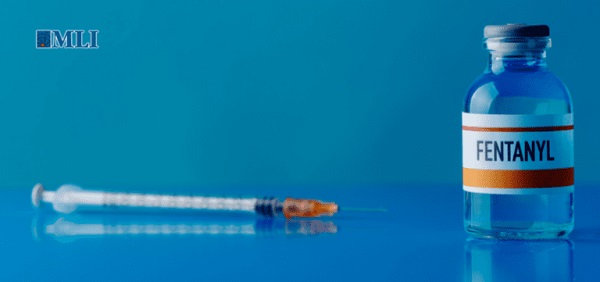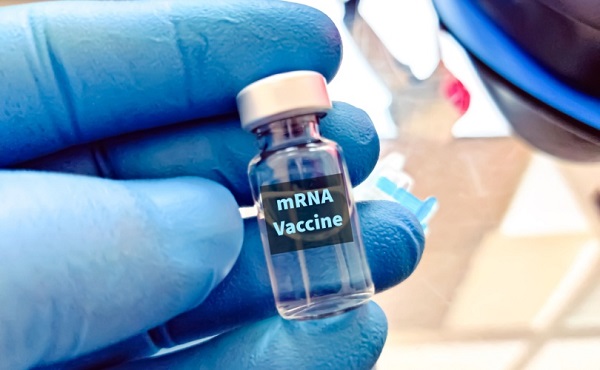Crime
Indian National Convicted in Washington for Smuggling 170 Pounds of Ecstasy from Canada for Transnational Drug Syndicate

 Sam Cooper
Sam Cooper
A federal jury has convicted Jaskaran Singh, a 31-year-old Indian national working for a transnational drug-trafficking organization supplied from Canada, of smuggling 174 pounds of MDMA across the U.S.-Canada border in a remote, forested area. Singh—who traveled from California to Washington’s northern border to meet three men carrying the Ecstasy load from British Columbia in backpacks and a suitcase—faces up to 20 years in prison and potential deportation.
The conviction comes amid heightened scrutiny of Canada, particularly British Columbia, as a hub for toxic narcotics trafficking fueled by precursor chemicals from China. President Donald Trump has repeatedly accused Canada of becoming a dangerous center for fentanyl production and export. Canadian legal experts say Vancouver’s attractiveness as a jurisdiction with lax port controls, weak laws, and a vast corporate and economic infrastructure facilitating international money laundering and underground banking has contributed to the region’s growth as a drug export center dominated by Chinese Triads and Mexican cartels.
“Mr. Singh trafficked more than 170 pounds of illegal drugs across our northern border into the United States,” stated Acting United States Attorney Richard Barker. The seizure, Barker said, was one of the largest ever in Eastern Washington, with a street value exceeding $7.8 million. Echoing the broader political messaging emanating from Washington, Barker said agents “intercepted this poison before it could harm communities in Eastern Washington.”
“The transnational drug-trafficking organization for whom Singh worked had identified the ideal, isolated location in rural Washington to smuggle illegal drugs across the northern border,” Barker said. “Today’s guilty verdict sends a clear message that those who seek to exploit our nation’s borders by flooding our communities with dangerous controlled substances will be held accountable for their crimes.”
Singh’s smuggling operation unfolded on April 29, 2023, when U.S. Border Patrol agents detected three suspects tripping motion sensor cameras in a remote area south of the U.S.-Canada border, near Danville, Washington. Singh had traveled from Northern California to Washington the day prior, renting a van in Seattle after a last-minute flight. From the U.S. side, he drove up to the Canadian border on the only path in the area, a dead-end dirt road known as Fourth of July Creek Road, U.S. border agents said.
Carrying backpacks and a suitcase, the unidentified smugglers from British Columbia trekked across 300 yards of wilderness to meet him. Minutes later, agents stopped Singh driving a rented 2014 Honda Odyssey south on the dead-end dirt track. Inside the van, they found the luggage containing MDMA worth over $7.8 million. Testimony at trial established that the three men transported the MDMA from the Canadian side of the border to where Singh had parked the rented Odyssey van.
Key digital evidence, according to prosecutors, included data from Singh’s phone revealing a map and messages directing him to the drop point, instructing him to “leave the back hood open.”
The three couriers escaped back to Canada, but Singh was arrested.
The case highlights a growing nexus between MDMA and fentanyl trafficking, as outlined in the U.S. State Department’s 2024 report from the Bureau of International Narcotics and Law Enforcement Affairs. It notes that transnational criminal organizations, including the Sinaloa Cartel, are increasingly diversifying their portfolios, trafficking both MDMA and fentanyl due to overlapping production and distribution networks. While fentanyl dominates U.S. overdose deaths, MDMA remains lucrative, often produced in clandestine labs using precursor chemicals sourced from the same global suppliers—primarily in China—that fuel fentanyl synthesis.
Singh’s conviction follows a recent British Columbia civil forfeiture case targeting a Sinaloa-linked cartel cell in Surrey, minutes from the Peace Arch border crossing. On September 23, 2024, the Royal Canadian Mounted Police raided a luxury property on 77th Avenue, seizing numerous Mexican passports, MDMA, fentanyl, methamphetamine, ketamine, and other drugs, alongside 23 firearms and cash bundled inconsistently with banking norms. Court filings allege the cell, led by figures like Hector Chavez-Anchondo, negotiated directly with Sinaloa Cartel leader Ismael “El Mayo” Zambada Garcia—arrested in July 2024—for cocaine imports, pivoting to other suppliers post-arrest. The B.C. Director of Civil Forfeiture claims this group trafficked a range of substances, including MDMA and fentanyl, using violence to maintain operations.
While fentanyl trafficking from Canada into the United States appears to have surged since 2023, according to the U.S. State Department’s 2024 report, RCMP say that most fentanyl produced in Canada was being trafficked to Australia and New Zealand, as well as distributed domestically.
“Transnational criminal organizations in Canada receive the bulk of fentanyl precursor chemicals from the People’s Republic of China (PRC),” the report says, adding “Canadian Border Services Agency estimated that 98 percent of Canada’s fentanyl-making materials seized in western Canada originated in the PRC.”
In another major case linking Chinese fentanyl, methamphetamine, and MDMA precursors to Vancouver labs and transnational narco-networks, the U.S. Department of the Treasury sanctioned Vancouver-based Valerian Labs and its head, Canadian national Bahman Djebelibak, in October 2023. According to the report, the company received shipments of methylamine hydrochloride—a precursor for methamphetamine and MDMA—from a PRC-based supplier and attempted to procure substances used in the production of fentanyl, heroin, and methamphetamine.
“In the past year, Canadian law enforcement conducted several high-profile raids on fentanyl labs in British Columbia, Alberta, and Ontario,” the State Department report adds. “In April 2023, the Vancouver Police Department raided a fentanyl super lab that possessed approximately $5.9 million in illicit drugs. In August 2023, police in Ontario dismantled a large network of opioid producers through Project Odeon in the Greater Toronto Area. In November 2023, the Royal Canadian Mounted Police in British Columbia raided a large fentanyl lab and seized 2.5 million doses of fentanyl.”
Meanwhile, Prime Minister Mark Carney, who succeeded Justin Trudeau, has maintained that Canada has strengthened security and resources at the northern border in response to former U.S. President Donald Trump’s demands for action.
Speaking at a campaign stop in Kelowna on February 12, 2025, Carney acknowledged the severity of the issue while downplaying Canada’s vulnerability. “Fentanyl is an absolute crisis in the United States. It’s a challenge here, but it’s a crisis there,” he stated.
The Bureau is a reader-supported publication.
To receive new posts and support my work, consider becoming a free or paid subscriber.
Business
Closing information gaps to strengthen Canada’s border security and track fentanyl

By Sean Parker, Dawn Jutla, and Peter Copeland for Inside Policy
To promote better results, we lay out a collaborative approach
Despite exaggerated claims about how much fentanyl is trafficked across the border from Canada to the United States, the reality is that our detection, search, and seizure capacity is extremely limited.
We’re dealing with a “known unknown”: a risk we’re aware of, but don’t yet have the capacity to understand its extent.
What’s more, it may be that the flow of precursor chemicals—ingredients used in the production of fentanyl—is where much of the concern lies. Until we enhance our tracking, search, and seizure capacity, much will remain speculative.
As border security is further scrutinized, and the extent of fentanyl production and trafficking gets brought into sharper focus, the role of the federal government’s Precursor Chemical Risk Management Unit (PCRMU)—announced recently by Health Canada—will become apparent.
Ottawa recently took action to enhance the capabilities of the PCRMU. It says the new unit will “provide better insights into precursor chemicals, distribution channels, and enhanced monitoring and surveillance to enable timely law enforcement action.” The big question is, how will the PCRMU track the precursor drugs entering into Canada that are used to produce fentanyl?
Key players in the import-export ecosystem do not have the right regulatory framework and responsibilities to track and share information, detect suspect activities, and be incentivized to act on it. That’s one of the reasons why we know so little about how much fentanyl is produced and trafficked.
Without proper collaboration with industry, law enforcement, and financial institutions, these tracking efforts are doomed to fail. To promote better results, we lay out a collaborative approach that distributes responsibilities and retools incentives. These measures would enhance information collection capabilities, incentivize system actors to compliance, and better equip law enforcement and border security services for the safety of Canadians.
Trade-off bottleneck: addressing the costs of enhanced screening
To date, it’s been challenging to increase our ability to detect, search, and seize illegal goods trafficked through ports and border crossings. This is due to trade-offs between heightened manual search and seizure efforts at ports of entry, and the economic impacts of these efforts.
In 2024, the Canada Border Services Agency (CBSA) admitted over 93 million travelers. Meanwhile, 5.3 million trucks transported commercial goods into Canada, around 3.6 million shipments arrived via air cargo, nearly 2 million containers were processed at Canadian ports, roughly 1.9 million rail cars carried goods into the country, and about 145.7 million courier shipments crossed the border. The CBSA employs a risk-based approach to border security, utilizing intelligence, behavioral analysis, and random selection to identify individuals or shipments that may warrant additional scrutiny. This triaging process aims to balance effective enforcement with the facilitation of legitimate travel and trade.
Exact percentages of travelers subjected to secondary inspections are not publicly disclosed, but it’s understood that only a small fraction undergo such scrutiny. We don’t learn about the prevalence of these issues through our border screening measures, but in crime reporting data—after it’s too late to avert.
It’s key to have an approach that minimizes time and personnel resources deployed at points of entry. To be effective without being economically disruptive, policymakers, law enforcement, and border security need to strengthen requirements for information gathering, live tracking, and sharing. Legislative and regulatory change to require additional information of buyers and sellers—along with stringent penalties to enforce non-compliance—is a low-cost, logistically efficient way of distributing responsibility for this complex and multifaceted issue. A key concept explored in this paper is strengthening governance controls (“controls”) over fentanyl supply chains through new processes and data digitization, which could aid the PCRMU in their strategic objectives.
Enhanced supply chain controls are needed
When it comes to detailed supply chain knowledge of fentanyl precursor chemicals moving in and out of Canada, regulator knowledge is limited.
That’s why regulatory reform is the backbone of change. It’s necessary to ensure that strategic objectives are met by all accountable stakeholders to protect the supply chain and identify issues. To rectify the issues, solutions can be taken by the PCRMU to obtain and govern a modern fentanyl traceability system/platform (“platform”) that would provide live transparency to regulators.
A fresh set of supply chain controls, integrated into a platform as shown in Fig. 1, could significantly aid the PCRMU in identifying suspicious activities and prioritizing investigations.

Our described system has two distinctive streams: one which leverages a combination of physical controls such as package tampering and altered documentation against a second stream that looks at payment counterparties. Customs agencies, transporters, receivers, and financial institutions would have a hand in ensuring that controls in the platform are working. The platform includes several embedded controls to enhance supply chain oversight. It uses commercially available Vision AI to assess packaging and blockchain cryptography to verify shipment documentation integrity. Shipment weight and quantity are tracked from source to destination to detect diversion, while a four-eyes verification process ensures independent reconciliation by the seller, customs, and receiver. Additionally, payment details are linked to shipments to uncover suspicious financial activity and support investigations by financial institutions and regulators like FINTRAC and FINCEN.
A modern platform securely distributes responsibility in a way that’s cost effective and efficient so as not to overburden any one actor. It also ensures that companies of all sizes can participate, and protects them from exploitation by criminals and reputational damage.
In addition to these technological enhancements and more robust system controls, better collaboration between the key players in the fentanyl supply chain is needed, along with policy changes to incentivize each key fentanyl supply chain stakeholder to adopt the new controls.
Canadian financial institutions: a chance for further scrutiny
Financial institutions (FIs) are usually the first point of contact when a payment is being made by a purchaser to a supplier for precursor chemicals that could be used in the production of fentanyl. It is crucial that they enhance their screening and security processes.
Chemicals may be purchased by wires or via import letters of credit. The latter is the more likely of the two instruments to be used because this ensures that the terms and conditions in the letter of credit are met with proof of shipment prior to payment being released. Payments via wire require less transparency.
Where a buyer pays for precursor chemicals with a wire, it should result in further scrutiny by the financial institution. Requests for supporting documentation including terms and conditions, along with proof of shipment and receipt, should be provided. Under new regulatory policy, buyers would be required to place such supporting documentation on the shared platform.
The less transparent a payment channel is in relation to the supply chain, the more concerning it should be from a risk point of view. Certain payment channels may be leveraged to further mask illicit activity throughout the supply chain. At the onset of the relationship the seller and buyers would link payment information on the platform (payment channel, recipient name, recipient’s bank, date, and payment amount) to each precursor or fentanyl shipment. The supplier, in turn, should record match payment information (payment channel, supplier name, supplier’s bank, date, and payment amount).
Linking payment to physical shipment would enable data analytics to detect irregularities. An irregularity is flagged when the amounts and/or volume of payments far exceed the value of the received goods or vice versa. The system would be able to understand which fentanyl supply chains tend to use a particular set of FIs. This makes it possible to conduct real-time mapping of companies, their fentanyl and precursor shipments and receipts, and the payment institutions they use. With this bigger picture, FIs and law enforcement could connect the dots faster.
Live traceability reporting
Today, suppliers of fentanyl precursors are subject to the Pre-Export Notification Online (PEN Online) database. This database enables governments to monitor international trade in precursor chemicals by sending and receiving pre-export notifications. The system helps prevent the diversion of chemicals used in the illicit manufacture of drugs by allowing authorities to verify the legitimacy of shipments before they occur.
To further strengthen oversight, the platform utilizes immutability technologies—such as blockchain or secure immutable databases—which can be employed to encrypt all shipping documents and securely share them. This presents an auditable form of chain-of-custody and makes any alterations apparent. Customs and buyers would have the capability to verify the authenticity of the originating documents in a way that doesn’t compromise business confidentiality. With the use of these technologies, law enforcement can narrow down their investigations.
An information gap currently exists as the receivers of the shipments don’t share their receipts information with PEN. To strengthen governance on fentanyl supply chains, regulatory policy and legislative changes are needed. The private sector should be mandated to report received quantities of fentanyl or its precursors, as well as suspicious receiving destinations. This could be accomplished on the platform which would embed the receiving process, a reconciliation process of the transaction, the secure upload and sharing of documents, and would be minimally disruptive to business processes.
Additionally, geo-location technology embedded in mobile devices and/or shipments would provide real-time location-based tracking of custody transactions. These geo-controls would ensure accountability across the fentanyl supply chain, in particular where shipments veer off or stop too long on regular shipping routes. Canadian transporters of fentanyl and its precursor chemicals should play an important role in detecting illicit diversion/activities.
Digital labelling
Licensed fentanyl manufacturers could add new unique digital labels to their shipments to get expedited clearance. For example, immutable digital labelling platforms enable tamper-proof digital labels for legitimate fentanyl shipments. This would give pharmacies, doctors, and regulators transparency into the fentanyl’s:
- Chemical composition and concentrations (determining legitimate vs. adulterated versions of the drug)
- Manufacturing facility ID, batch ID, and regulatory compliance status
- Intended buyer authentication (such as licensed pharmaceutical firms or distributors)
Immutable digital labelling platforms offer secure role-based access control. They can display customized data views according to time of day, language, and location. Digital labels could enable international border agencies and law enforcement to receive usable data, allowing legal shipments through faster while triggering closer shipment examinations for those without of a digital label.
International and domestic transporter controls
Transporters act as intermediaries in the supply chain. Their operations could be monitored through a regulatory policy that mandates their participation in the platform for fentanyl and precursor shipments. The platform would support a mobile app interface for participants on-the-move, as well as a web portal and application programming interfaces (APIs) for large-size supply chain participants. Secure scanning of packaging at multiple checkpoints, combined with real-time tracking, would provide an additional layer of protection against fraud, truckers taking bribes, and unauthorized alterations to shipments and documents.
Regulators and law enforcement participation
Technology-based fentanyl controls for suppliers, buyers, and transporters may be reinforced by international customs and law enforcement collaboration on the platform. Both CBSA and law enforcement could log in and view alerts about suspicious activities issued from the FIs, transporters, or receivers. The reporting would allow government personnel to view a breakdown of fentanyl importers, the number of import permit applications, and the amount of fentanyl and its precursors flowing into the country. Responsible regulatory agencies—such as the CBSA and PCRMU—could leverage the reporting to identify hot spots.
The platform would use machine learning to support CBSA personnel in processing an incoming fentanyl or precursor shipment. Machine learning refers to AI algorithms and systems that improve their knowledge with experience. For example, an AI assistant on the traceability system could use machine learning to predict and communicate which import shipments arriving at the border should be passed. It can base these suggestions on criteria like volume, price, origin of raw materials, and origin of material at import point. It can also leverage data from other sources such as buyers, sellers, and banks to make predictions. As an outcome, the shipment may be recommended to pass, flagged as suspicious, or deemed to require an investigation by CBSA.
It’s necessary to keep up to date on new precursor chemicals as the drug is reformulated. Here, Health Canada can play a role, using its new labs and tests—expected as part of the recently announced Canadian Drug Analysis Centre—to provide chemical analysis of seized fentanyl. This would inform which additional chemical supply chains should be tracked in the PCRMU’s collaborative platform, and all stakeholders would widen their scope of review.
These new tools would complement existing cross-border initiatives, including joint U.S.-Canada and U.S.-Mexico crackdowns on illicit drug labs, as well as sovereign efforts. They have the potential to play a vital role in addressing fentanyl trafficking.
A robust, multi-pronged strategy—integrating existing safeguards with a new PCRMU traceability platform—could significantly disrupt the illegal production and distribution of fentanyl. By tracking critical supply chain events and authenticating shipment data, the platform would equip law enforcement and border agencies in Canada, the U.S., and Mexico with timely, actionable intelligence. The human toll demands urgency: from 2017 to 2022, the U.S. averaged 80,000 opioid-related deaths annually, while Canada saw roughly 5,500 per year from 2016 to 2024. In just the first nine months of 2024, Canadian emergency services responded to 28,813 opioid-related overdoses.
Combating this crisis requires more than enforcement. It demands enforceable transparency. Strengthened governance—powered by advanced traceability technology and coordinated public-private collaboration—is essential. This paper outlines key digital controls that can be implemented by global suppliers, Canadian buyers, transporters, customs, and financial institutions. With federal leadership, Canada can spearhead the adoption of proven, homegrown technologies to secure fentanyl supply chains and save lives.
Sean Parker is a compliance leader with well over a decade of experience in financial crime compliance, and a contributor to the Macdonald-Laurier Institute.
Dawn Jutla is the CEO of Peer Ledger, the maker of a traceability platform that embeds new control processes on supply chains, and a professor at the Sobey School of Business.
Peter Copeland is deputy director of domestic policy at the Macdonald-Laurier Institute.
2025 Federal Election
‘Sadistic’ Canadian murderer claiming to be woman denied transfer to female prison

From LifeSiteNews
The logical decision to house the male murderer with men flies in the face of the Liberal Party’s official stance, which is to incarcerate prisoners according to their ‘self-identified’ gender.
A Canadian man who butchered his family and now claims to be a woman will not be allowed to transfer to a female prison.
On April 8, Correctional Services Canada (CSC) announced that Mohamad Al Ballouz, who brutally murdered his wife and two children, will be sent to a men’s prison, despite claiming to be a woman, according to CTV News.
“When there are overriding health and safety concerns, the request is denied and alternatives are put in place to meet the offender’s gender‑related needs at the institution where they are incarcerated,” the CSC statement reads.
Following an assessment of Al Ballouz request, CSC confirmed that he “will be incarcerated in a men’s institution.”
On December 16, Al Ballouz, a 38-year-old from Quebec, was found guilty second-degree murder of his wife Synthia Bussières, first-degree murder of five-year-old Eliam and two-year-old Zac, and one count of attempted arson.
Crown prosecutor Éric Nadeau revealed that the murder took place in September 2022 when Al Ballouz slaughtered his family at their Brossard apartment. He stabbed his wife 23 times before suffocated his children and trying to set the apartment on fire. He then ingested windshield washer fluid, which is believed to have been a suicide attempt.
During the trial, Quebec Superior Justice Eric Downs described Al Ballouz, as having a “sadistic character” and being “deeply narcissistic.” He was sentenced to life imprisonment with no chance of parole for 25 years.
Throughout the trial, Al Ballouz, a biological male, claimed to be a woman and demanded that he be referred to as “Levana,” a change which was made after he was charged for his crimes. Notably, the Canadian Broadcasting Report’s (CBC’s) report of the case refers to the convicted murder as “she” and uses his fake name.
Following his sentencing, the murderer requested to be sent to the Joliette Institution for Women; however, Downs responded that is a decision for Correctional Service Canada.
Currently under the Liberal Party, the policy is to place prisoners according to their “self-identified” gender, not according to biology. As a result, male rapists and murderers can be sent to prison with females.
However, Al Ballouz’s case caused an uproar on social media as many pointed out that putting the murderer in a women’s prison would pose a danger to female inmates.
Conservative Party leader Pierre Poilievre has condemned the Liberal policy and promised that he would end this practice if elected.
“Surreal: A man who killed his wife and two kids now claims he is a woman to go to a female prison,” he wrote in a December 22 post on X.
“I can’t believe I have to say this: but when I’m PM, there will be no male prisoners in female jails,” Poilievre continued. “Period.”
-

 COVID-192 days ago
COVID-192 days agoCOVID virus, vaccines are driving explosion in cancer, billionaire scientist tells Tucker Carlson
-

 Dr. Robert Malone2 days ago
Dr. Robert Malone2 days agoThe West Texas Measles Outbreak as a Societal and Political Mirror
-

 Health2 days ago
Health2 days agoHorrific and Deadly Effects of Antidepressants
-

 Bruce Dowbiggin2 days ago
Bruce Dowbiggin2 days agoIs HNIC Ready For The Winnipeg Jets To Be Canada’s Heroes?
-

 illegal immigration1 day ago
illegal immigration1 day agoDespite court rulings, the Trump Administration shows no interest in helping Abrego Garcia return to the U.S.
-

 Health17 hours ago
Health17 hours agoTrump admin directs NIH to study ‘regret and detransition’ after chemical, surgical gender transitioning
-

 2025 Federal Election17 hours ago
2025 Federal Election17 hours agoMEI-Ipsos poll: 56 per cent of Canadians support increasing access to non-governmental healthcare providers
-

 2025 Federal Election9 hours ago
2025 Federal Election9 hours agoRCMP Whistleblowers Accuse Members of Mark Carney’s Inner Circle of Security Breaches and Surveillance










